A concrete and steel house in California designed by Faulkner Architects

Faulkner architects has designed a family retreat for a hard-working AIDS researcher based in New York City. The home, which is immersed in the natural landscape of Truckee in California, intends to bring restorative calm upon its inhabitants, prioritising closeness with nature and leaving raw materials exposed.
‘Don’t hurt the boulders’, said the client, who wanted the house to be gentle on its environment and respectful as possible to its site – a former flood field on the edge of an evergreen forest that meets with a spring-fed creek at the base of a dormant volcano. Consequently, the home cantilevers over boulders and trees grow close to its boundaries. Its exterior is surrounded by small patios and a pebble-lined pool encouraging an easy outdoor existence upon its inhabitants.
The interior spaces are layered and almost modular, connecting large private spaces with smaller communal areas – the house prioritises privacy for its inhabitants, a multi-generational family, yet it is also democratic – each member of the client’s family contributed ideas for the design of the house.
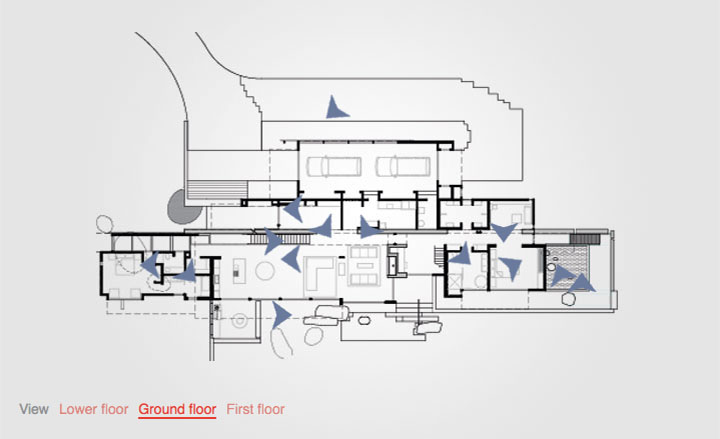
Take an interactive tour of Creek House
The circulation of the plan allows movement from quieter darker spaces, to lighter exposed moments such as the spaces where floor to ceiling glazing opens up views of dark green evergreen trees or the surrounding rocky landscape. The architects were inspired by Junichiro Tanizaki’s essay ‘In Praise of Shadow’ with the architectural progression between dark and light.
Exposed and often raw materials include steel, rift-sawn oak, bluestone and white gypsum. The whole house pivots on a large concrete wall, that extends beyond the walls of the house, out into the landscape. The device provides the client with privacy desired as well as shading the house and the exterior spaces from the sun.
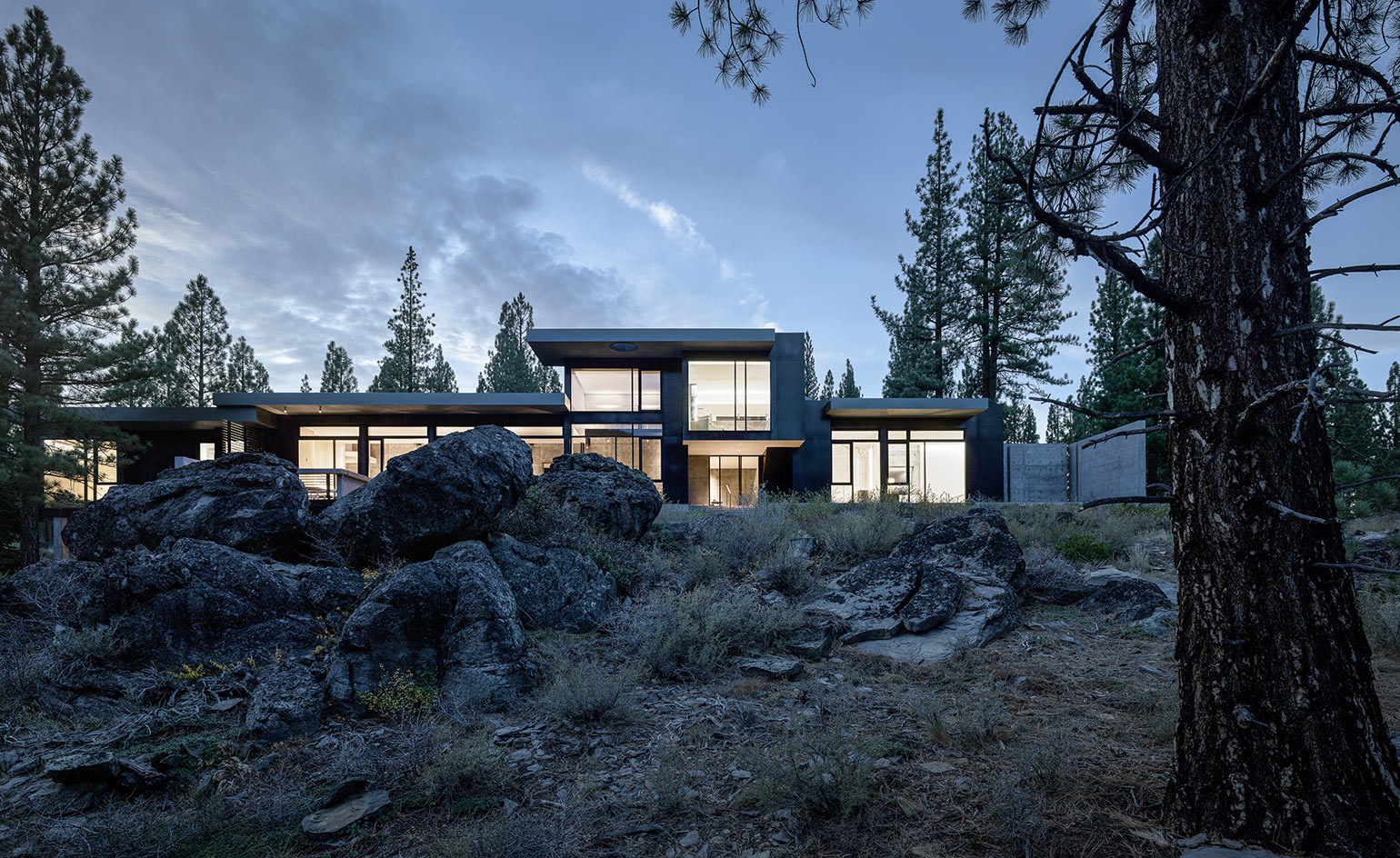
The sprawling house was designed as a restorative retreat for a New Yorker.

Around the exterior of the house concrete platforms and a pebble-lined pool encourage outdoor living. The architects were inspired by a pool they had seen in Spain that was fed by rainwater through a channel that could be opened and closed.
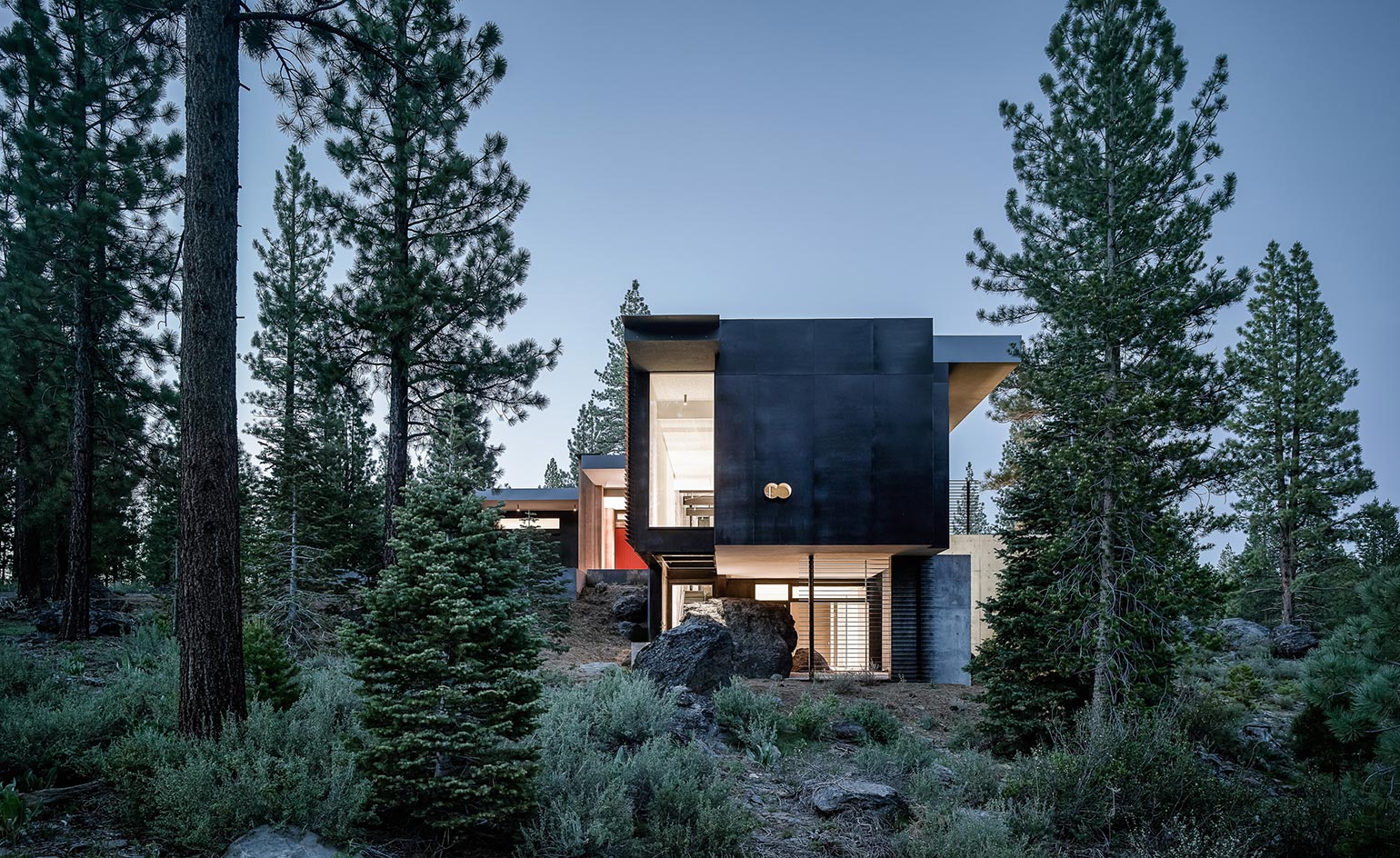
The modules of the house were designed for the client’s multi-generational family.

The south-facing site sits at the edge of an evergreen forest, meeting a spring-fed creek at the base of an ancient volcano.
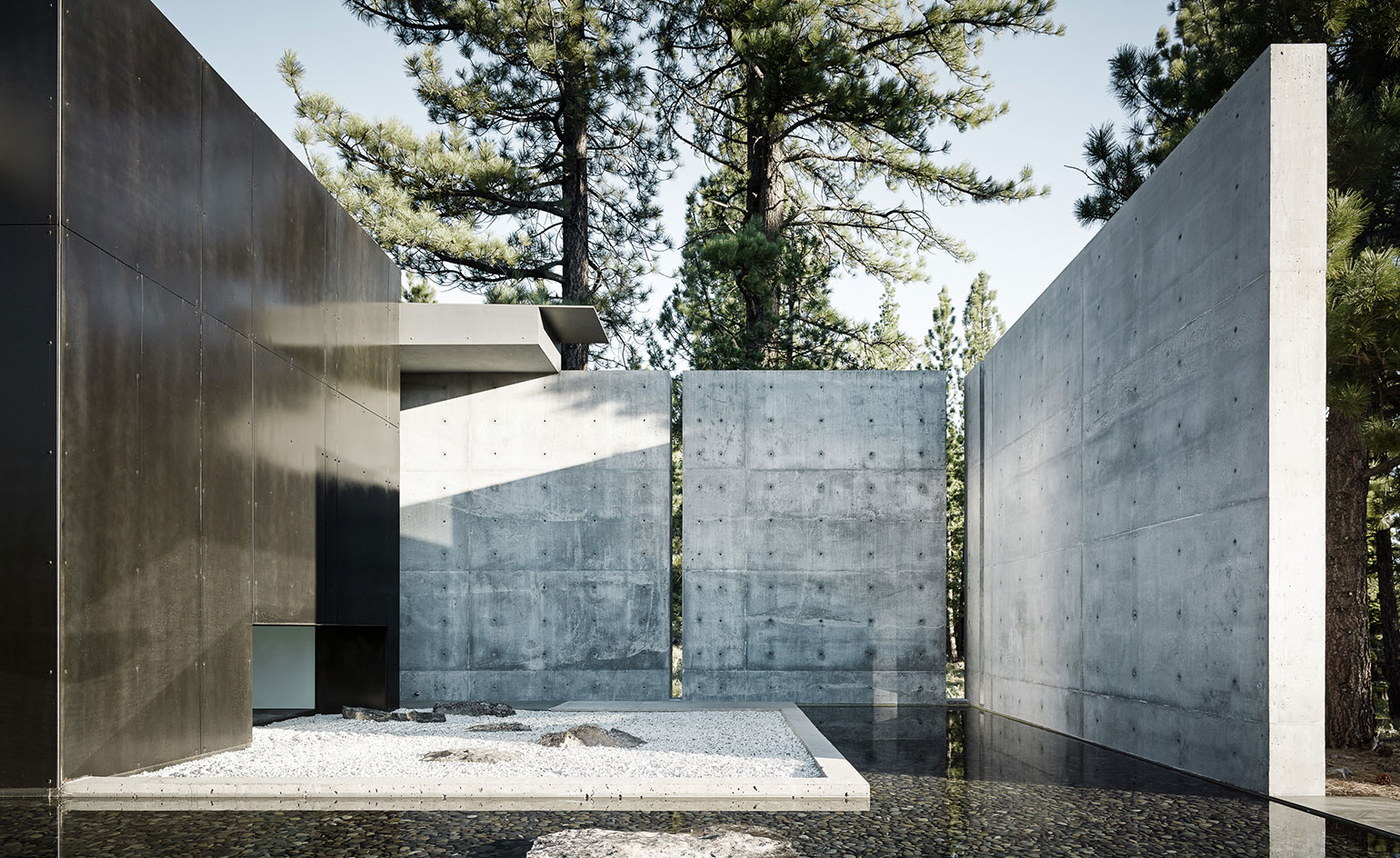
Concrete walls provide privacy and protection from the sun.

Each member of the client’s family contributed in ideas for the design of the house.

Materials used in the interior include steel and rift-sawn oak.

Floor-to-ceiling windows feature throughout the design of the house.
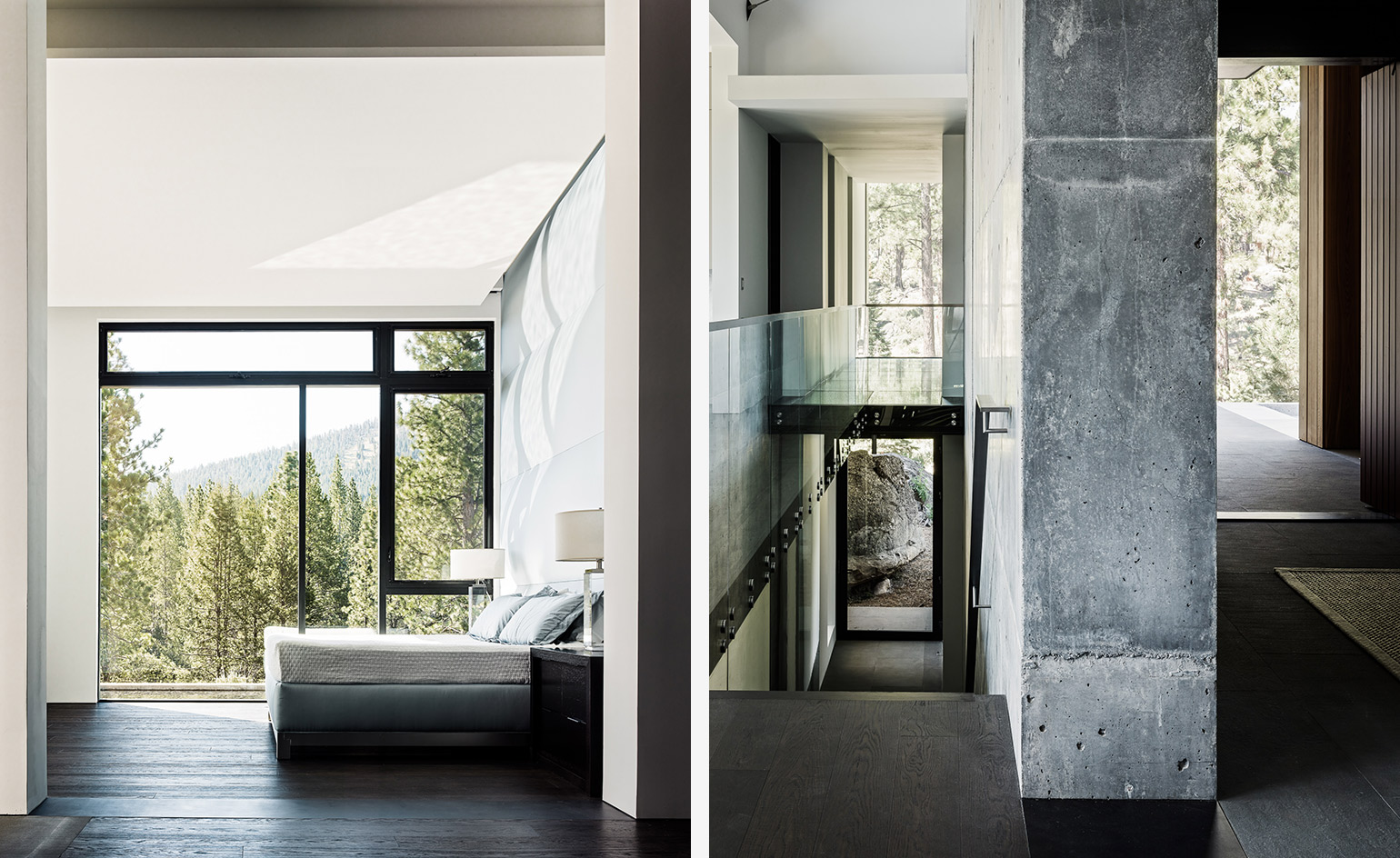
Exposed concrete, bluestone and white gypsum walls feature across the retreat.
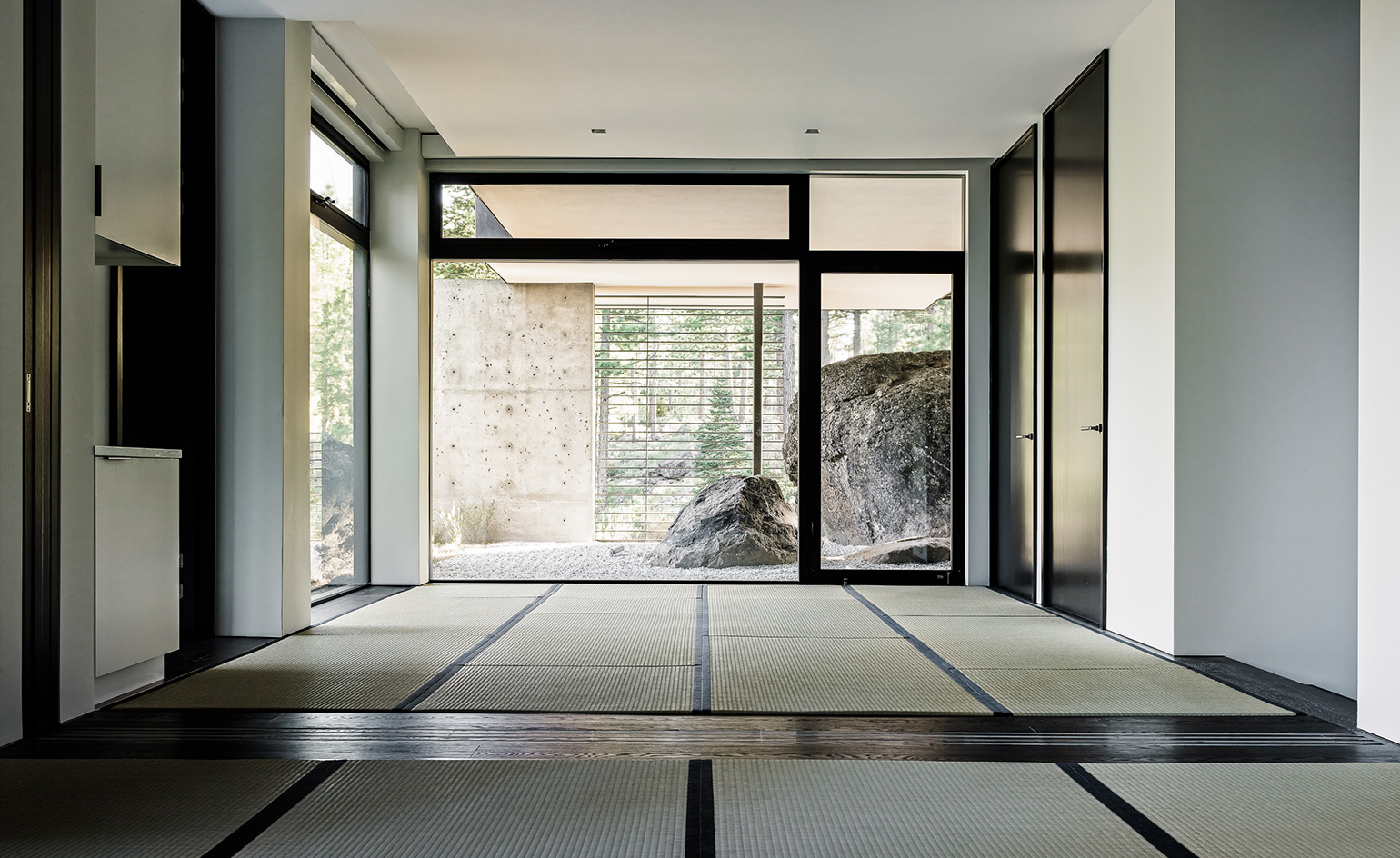
The house shows influence of Japanese minimalist design.

Views of the surrounding landscape within which the house is immersed are framed by glazing.
Receive our daily digest of inspiration, escapism and design stories from around the world direct to your inbox.
Harriet Thorpe is a writer, journalist and editor covering architecture, design and culture, with particular interest in sustainability, 20th-century architecture and community. After studying History of Art at the School of Oriental and African Studies (SOAS) and Journalism at City University in London, she developed her interest in architecture working at Wallpaper* magazine and today contributes to Wallpaper*, The World of Interiors and Icon magazine, amongst other titles. She is author of The Sustainable City (2022, Hoxton Mini Press), a book about sustainable architecture in London, and the Modern Cambridge Map (2023, Blue Crow Media), a map of 20th-century architecture in Cambridge, the city where she grew up.
-
 New tech dedicated to home health, personal wellness and mapping your metrics
New tech dedicated to home health, personal wellness and mapping your metricsWe round up the latest offerings in the smart health scene, from trackers for every conceivable metric from sugar to sleep, through to therapeutic furniture and ultra intelligent toothbrushes
-
 Out of office: The Wallpaper* editors’ picks of the week
Out of office: The Wallpaper* editors’ picks of the week'Tis the season for eating and drinking, and the Wallpaper* team embraced it wholeheartedly this week. Elsewhere: the best spot in Milan for clothing repairs and outdoor swimming in December
-
 How Stephen Burks Man Made is bringing the story of a centuries-old African textile to an entirely new audience
How Stephen Burks Man Made is bringing the story of a centuries-old African textile to an entirely new audienceAfter researching the time-honoured craft of Kuba cloth, designers Stephen Burks and Malika Leiper have teamed up with Italian company Alpi on a dynamic new product
-
 Step inside this resilient, river-facing cabin for a life with ‘less stuff’
Step inside this resilient, river-facing cabin for a life with ‘less stuff’A tough little cabin designed by architects Wittman Estes, with a big view of the Pacific Northwest's Wenatchee River, is the perfect cosy retreat
-
 Remembering Robert A.M. Stern, an architect who discovered possibility in the past
Remembering Robert A.M. Stern, an architect who discovered possibility in the pastIt's easy to dismiss the late architect as a traditionalist. But Stern was, in fact, a design rebel whose buildings were as distinctly grand and buttoned-up as his chalk-striped suits
-
 Own an early John Lautner, perched in LA’s Echo Park hills
Own an early John Lautner, perched in LA’s Echo Park hillsThe restored and updated Jules Salkin Residence by John Lautner is a unique piece of Californian design heritage, an early private house by the Frank Lloyd Wright acolyte that points to his future iconic status
-
 The Stahl House – an icon of mid-century modernism – is for sale in Los Angeles
The Stahl House – an icon of mid-century modernism – is for sale in Los AngelesAfter 65 years in the hands of the same family, the home, also known as Case Study House #22, has been listed for $25 million
-
 Houston's Ismaili Centre is the most dazzling new building in America. Here's a look inside
Houston's Ismaili Centre is the most dazzling new building in America. Here's a look insideLondon-based architect Farshid Moussavi designed a new building open to all – and in the process, has created a gleaming new monument
-
 Frank Lloyd Wright’s Fountainhead will be opened to the public for the first time
Frank Lloyd Wright’s Fountainhead will be opened to the public for the first timeThe home, a defining example of the architect’s vision for American design, has been acquired by the Mississippi Museum of Art, which will open it to the public, giving visitors the chance to experience Frank Lloyd Wright’s genius firsthand
-
 Clad in terracotta, these new Williamsburg homes blend loft living and an organic feel
Clad in terracotta, these new Williamsburg homes blend loft living and an organic feelThe Williamsburg homes inside 103 Grand Street, designed by Brooklyn-based architects Of Possible, bring together elegant interiors and dramatic outdoor space in a slick, stacked volume
-
 This ethereal Miami residence sprouted out of a wild, jungle-like garden
This ethereal Miami residence sprouted out of a wild, jungle-like gardenA Miami couple tapped local firm Brillhart Architecture to design them a house that merged Florida vernacular, Paul Rudolph and 'too many plants to count’